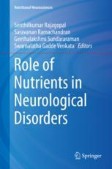Search
Search Results
-

-
Steps to Improve Precision Medicine in Epilepsy
Precision medicine is an old concept, but it is not widely applied across human health conditions as yet. Numerous attempts have been made to apply...
-

-
Precision Therapy for Epilepsy Related to Brain Malformations
Malformations of cortical development (MCDs) represent a range of neurodevelopmental disorders that are collectively common causes of developmental...

-
Restless leg syndrome prevalence in epilepsy patients and its impact on quality of sleep
This study aimed to determine the frequency of restless leg syndrome (RLS) and other sleep-related movement disorders and their effects on sleep...
-
Novel Therapeutics for Neonatal Seizures
Neonatal seizures are a common neurologic emergency for which therapies have not significantly changed in decades. Improvements in diagnosis and...

-
Anticonvulsant Effectiveness and Neurotoxicity Profile of 4-butyl-5-[(4-chloro-2-methylphenoxy)methyl]-2,4-dihydro-3H-1,2,4-triazole-3-thione (TPL-16) in Mice
Protective (antiseizure) effects of 4-butyl-5-[(4-chloro-2-methylphenoxy)-methyl]-2,4-dihydro-3 H -1,2,4-triazole-3-thione (TPL-16) and acute...

-
Genotype–phenotype correlation in contactin-associated protein-like 2 (CNTNAP-2) developmental disorder
Contactin-associated protein-like 2 ( CNTNAP2 ) gene encodes for CASPR2, a presynaptic type 1 transmembrane protein, involved in cell–cell adhesion and...

-
Chemical toxicity by sex differences: a literature review of 2019–2023 studies
Objective and methodsWhile differences in cancer incidence between the two sexes/genders are often explained by differences in environmental exposure...
-
A Method to Induce Lamotrigine-Resistant Corneal Kindled Mice
The historical identification of promising investigational therapies for the treatment of epilepsy can be credited to the use of several animal...
-
Identification of abnormal closed-loop pathways in patients with MRI-negative pharmacoresistant epilepsy
Epilepsy is a disorder of brain networks, that is usually combined with cognitive and emotional impairment. However, most of the current research on...

-
Resting state EEG microstate profiling and a machine-learning based classifier model in epilepsy
Electroencephalography-based (EEG) microstate analysis is a promising and widely studied method in which spontaneous cerebral activity is segmented...

-

-
Nanoceuticals as Theranostics Against Neurodegenerative Diseases
Nanoceuticals, also referred to as nutraceuticals, are pharmacological molecules or natural supplements fabricated employing nanotechnology-related...
-
Synergistic Herb-Drug Interactions in Neurological Disorders
The incidence of neurological disorders of the brain, spine, and nervous system including Alzheimer’s disease (AD), stroke, dementia, epilepsy, and...
-
Trofinetide for the treatment of Rett syndrome: a randomized phase 3 study
Rett syndrome is a rare, genetic neurodevelopmental disorder. Trofinetide is a synthetic analog of glycine–proline–glutamate, the N-terminal...

-
Brain Infectious Diseases and Nanotherapy
Indubitably brain is a highly complex organ and has the responsibility to regulate all the cognitive, behavioral, and emotional activities. The...
-
Chronic Caffeine Consumption, Alone or Combined with Agomelatine or Quetiapine, Reduces the Maximum EEG Peak, As Linked to Cortical Neurodegeneration, Ovarian Estrogen Receptor Alpha, and Melatonin Receptor 2
RationaleEvidence of the effects of chronic caffeine (CAFF)-containing beverages, alone or in combination with agomelatine (AGO) or quetiapine...

-
Novel compound heterozygous mutation and phenotype in the tetratricopeptide repeat-like domain of the GEMIN5 gene in two Chinese families
BackgroundGEMIN5 is an RNA-binding protein that regulates multiple molecular functions, including splicing, localisation, translation, and mRNA...

